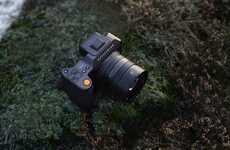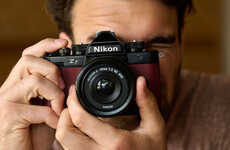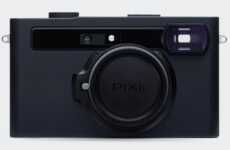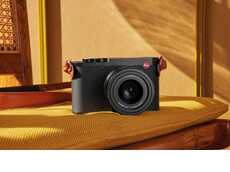
The New Sigma Cameras Share Similar Sensors and Designs
Rahul Kalvapalle — February 25, 2016 — Tech
References: sigma-global & gizmag
Camera maker Sigma has announced a brand new pair of mirrorless camera offerings that have some different features but are united in that both of them make use of the Foveon X3 image sensor. The Sigma sd Quattro and sd Quattro H will make use of APS-C and APS-H versions of the sensor respectively.
Another notable feature of these camera is that they feature a quirky, asymmetrical form and style factor that will appeal to photographers who want not just their photos but also their cameras to stand out in the crowd. As far as workings are concerned though, both cameras feature mid-range DSLR-style screens with manual controls, with 3-inch 1620k dot LCD screens and handy 2,360k dot electronic viewfinders.
With their combination of high-tech sensor and irreverent style, these mirrorless cameras will appeal to a wide range of photographers.
Another notable feature of these camera is that they feature a quirky, asymmetrical form and style factor that will appeal to photographers who want not just their photos but also their cameras to stand out in the crowd. As far as workings are concerned though, both cameras feature mid-range DSLR-style screens with manual controls, with 3-inch 1620k dot LCD screens and handy 2,360k dot electronic viewfinders.
With their combination of high-tech sensor and irreverent style, these mirrorless cameras will appeal to a wide range of photographers.
Trend Themes
1. Foveon X3 Image Sensor - The unique sensor technology presents opportunities for companies to innovate and create new camera products with improved image quality.
2. Asymmetrical Design - The trend towards unique and quirky camera designs presents opportunities for companies to differentiate themselves from their competitors and attract customers with a desire for a more personalized look.
3. Mirrorless Cameras - As technology improves and mirrorless camera designs become more popular, there are opportunities for companies to create more affordable and portable alternatives to traditional DSLR cameras.
Industry Implications
1. Photography Industry - Manufacturers could capitalize on the trend towards customizable and distinctive camera designs to differentiate themselves in the competitive photography market.
2. Electronics Industry - Companies that specialize in electronic components could leverage their expertise to create cutting-edge image sensors with improved image quality for use in cameras and other devices.
3. Consumer Retail Industry - As mirrorless camera technology improves, retailers could capitalize on the trend towards more affordable and lightweight camera options to attract price-sensitive customers.
5.4
Score
Popularity
Activity
Freshness























